On a mountain peak, on the seafront - Alanya Fortress
No data on the founding of the locality are known. The archaeological excavations from the caves in the area have highlighted the fact that it was inhabited since Neolithic. The fortress is located on a peninsula in the middle of the modern town, about 900 by 1300 m in dimensions, which rises, with steep slopes, about 250 m above sea level. The names since then are known in Greek "Korakesion" - "Prominent City", or Latin ("Coracesium"). After the division of the Roman Empire, it gained special importance in defending the area in front of the pirates. In 1221 the fortress was conquered by the Seljuk Sultan Alaaddin Keykubat.
Legend, the guide tells us, claims that in order to conquer a fortress on an impregnable peak, the sultan turned to a rattler, tying, at night, the fireballs lit by the horns of a herd of goats. Frightened by the large number of attackers, the defenders of the fortress surrendered. The number of the Sultan's soldiers, however, was only a few tens. He renamed the fortress in Alaiye, a derivative of Alaaddin, expanded the defense system and transformed it into his winter residence. On an area less than one square kilometer, the fortress had over 6.50 km of defense walls and 140 towers. To get to the top, we passed through three gates. Most of the objectives we see today are from that period.
The Mongolian invasion expels the Seljuks from the passing city, then under Cypriot rule and later under the Mamluks. In 1471 it was incorporated into the Ottoman Empire. In the 19th century the first residential buildings appear on the peninsula. Today the hill is full of houses, bars, restaurants or shops, favored by the modernized road, which goes up to the top. It has also turned the objective into a tourist destination of maximum interest. Interestingly, the current name, Alanya, was given to her by Atatürk in 1935, as the alphabet changed.
We reach the base of the hill and the guide tells us that we have to climb 250 m, and the bus, for reasons only known driver, stops. Immediately I think how many of those present are capable of such an ascent. Then I notice a cable cabin passing over us and I'm quieter. But, immediately, the guide completes: "Stay calm, get on the bus! ". Indeed, it starts and embarks on a serpentine road that immediately reminds me of the climb up Mount Tabor in Israel. Interestingly, I did not notice where the top end of the cable cabin is. I estimate the length of this road at about 3.50 km. On the way I notice some brave ones who climb on their own feet. Certainly, they are not only present here in a few hours trip.
Earlier I said that, to reach the top, we passed through three gates. We passed the two by bus. The third followed the parking lot and the ticket offices. Before this gate, the road makes a 90 degree bend, which reminds me of other ancient or medieval fortresses, which did everything possible to make it difficult for the enemies to enter. Passing through it, I entered the "Iç Kale" - the Inner Castle, the part arranged to be visited, the heart of the fortress throughout its entire existence.
The first impression is that of a park with lots of greenery and a series of alleys, materialized with wooden floors. Almost immediately, I notice two explanatory panels. The first presents the entire peninsula with historical objectives on its territory. On the first I discover that the cable cabin only goes up to the middle of the hill, somewhere in the area of the first gate, passed by the bus. The second details the premises of the "Inner Castle". It has a trapezoidal shape, with an average width of about 100 m and a height of about 175 m. The entrance is somewhere in the middle of the large base of the trapeze, respectively on the southern side. The enclosure is enclosed by a grooved wall, which looks too good not to be rebuilt recently.
After the first steps, I come to the conclusion that the place is not excavated for the most part, and the wooden floors protect the eventual remains of the footsteps of millions of tourists. In addition, the floors facilitate the movement of people with reduced mobility, a fact that is fully evidenced by the panel inside the "Inner Castle".
To the right of the entrance, along the eastern wall, was the palace of Sultan Alaaddin Keykubat. Currently only in the form of traces of the walls, slightly raised above the ground level, it seems that the palace had two levels and, after those found in the area, it was very richly ornamented. The highest construction remaining in the palace is the water tank. I may be wrong, but I also feel that it is partially rebuilt. The truth is, if I didn't have an explanatory badge, I didn't know what it was. The "Inner Castle" plan marks the existence of four such reservoirs. We are told, however, that there are several hundred throughout the peninsula. It seems that water was a problem, no matter how many inhabitants the fortress had.
Something further north of the palace, near the eastern wall, is the most imposing ruin of the enclosure. It is recognized by far that it is a church, with a Byzantine architecture, whose dome is almost intact. We could not find any information on its dedication. This church was built in the 12th century instead of another church in the 6th century, which was demolished in the 10th century. Traces of the first church can be seen on the grounds in the vicinity of the newer church. A look inside it shows that solid metal supports are needed to keep it standing. The explanations available in the vicinity of the church tell us that it has a three-leaf clover shape. But neither its outline, next to explanations, nor what I see, highlights this form. The apse of the altar seems very large and extends far beyond the dome, and by comparison the lateral apses are very small. But important to her age is the fact that she looks great.
Beyond the ruins of the church, parallel to and near the eastern wall, to the northern boundary of the enclosure, another ruin stretches. It is mainly below ground level, this is called "Vaulted Gallery". Long, relatively narrow, with a vaulted ceiling, collapsed from place to place, it has no other explanation for its destination. It seems to be an access road between the palace and the northern area of the enclosure. But why is it below ground level? Someone thought it would be prison. And this is possible, however, as well as possible is that there were storage places.
The small base of the trapeze, the northern side of the enclosure, is half arranged as a promenade for tourists. In fact, it is a perfect place for a spectacular panorama of Alanya and the surrounding areas. It is arranged a few meters above the ground, at the level of the battlements of the wall. Interestingly, there is also an elevator for people with reduced mobility near the staircase. I take the opportunity and location and take a lot of pictures. The "Inner Castle" plan does not give any name to the area, but it has some subdivisions drawn. They are probably below the promenade level, and I didn't notice them during the visit.
Beyond the promenade, up to the western wall, is another area of well-marked ruins. The same plan tells us that it is the "Fresh Court". It is not accessible to tourists, nor does it have the traces of a fresco. Besides, I couldn't find anything about this place from other sources. But it is a ruin that looks pretty good.
In the north - western corner of the enclosure is another platform, arranged in the same way as the aforementioned promenade, but with an area of only a few square meters. It is not protected by the wall of the fortress, as the promenade, being, somewhat, outside it, but is surrounded by a high metal fence. On the map of the "Inner Castle", it is called "Seyir Köșkü / Cruise Lodge". Unless it's a macabre humor, I don't really see what the place has to do with a "cruise." According to the guide, the condemned to death were executed here, by throwing them into the deep sea. The guide also tells us that those who managed to throw a stone into the water were grateful. Then he says a fool: "Many did not succeed, because the wind turned the stone back. ". We are not told how big the stone was, or how "strong" the convicts were. At home I have a curiosity and check, on Google Earth, the distance to the water. What I find here does not satisfy me. The distance of about 100 m resulted from here, supported by the drawing of the peninsula map, seems a bit exaggerated to the situation on the ground.
The road, next to the western wall, is like a walk through a park: an alley made of a wooden podium, crossing an area with grass and trees. Here and there, from the grass, the remains of old buildings were raised. Archaeologists have a lot to work on here.
Returning to the southern wall, we reach the area called "Baia Sultanului". The ruins, somewhat, resemble those of the palace, but with smaller rooms and seem better systematized. Maybe its name comes from here, but I couldn't even find out more about them.
At the end of the tour I have about 15 minutes until the bus meeting. I would like to return to the "Sultan's Palace", to walk along the alley that runs through it, neglected by the group at first... but there is not time.
Thank you for reading!
Cheers!
View this post on TravelFeed for the best experience.
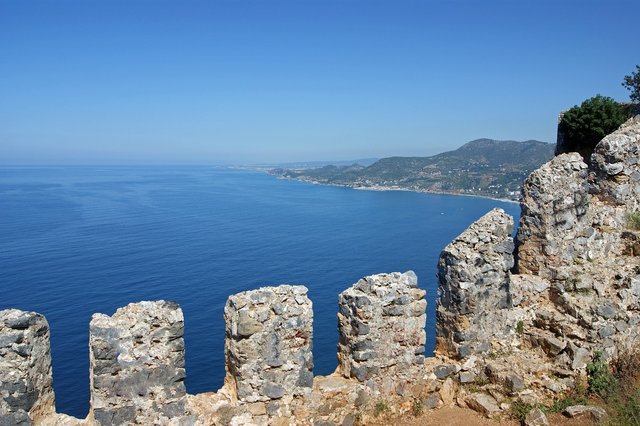
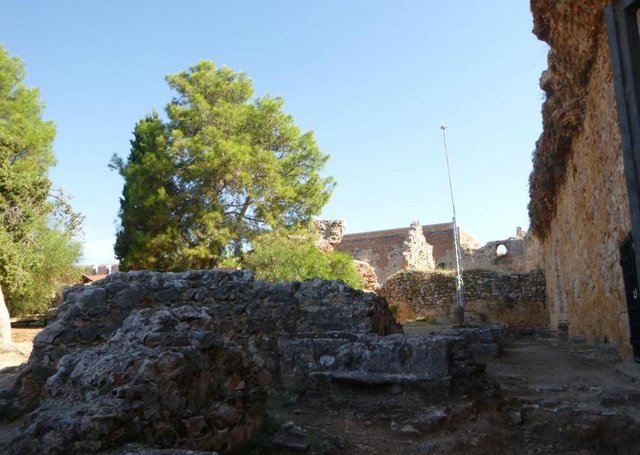
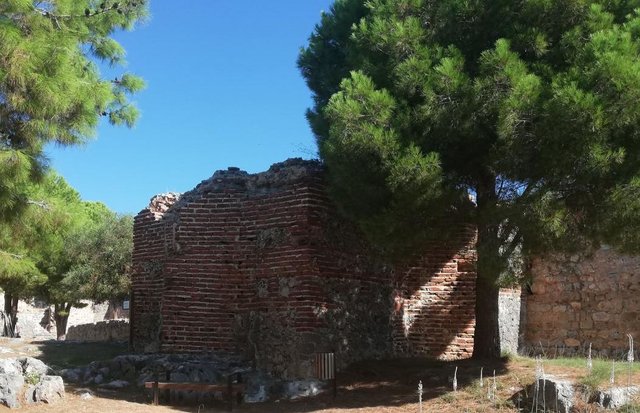
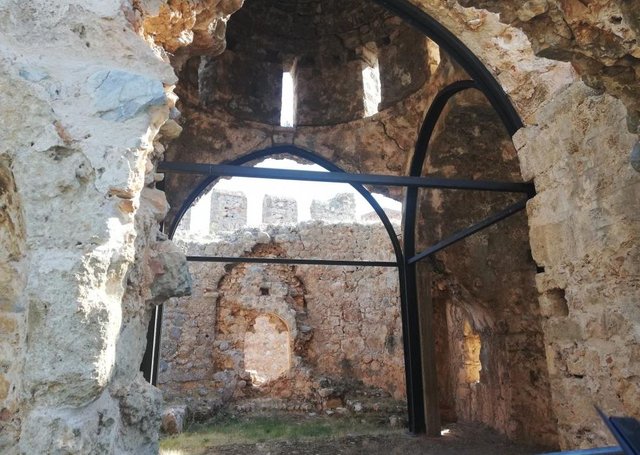
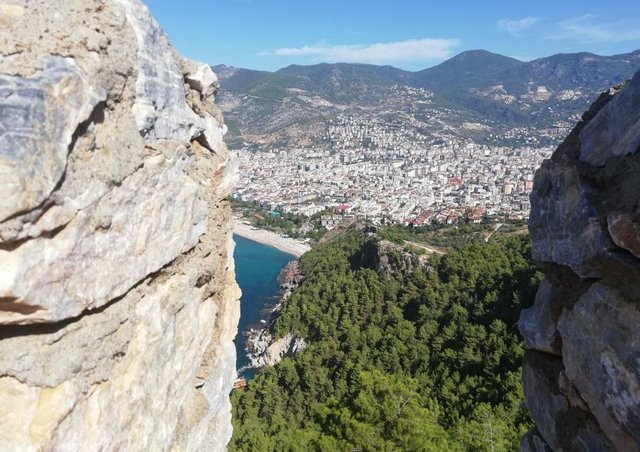
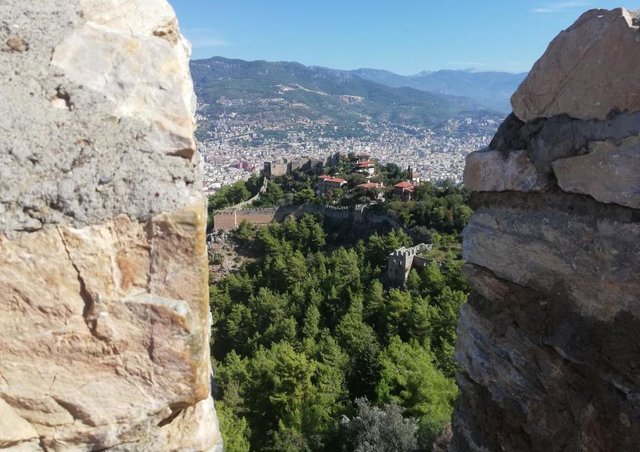
Congratulations @onlinezz! Your post brought a smile to the TravelFeed team so we have sent you a smiley. Keep up the good job. 🙂
Feedback
Based on your post, we have the following feedback for you:
Thanks for using TravelFeed!
@worldcapture (TravelFeed team)
PS: TravelFeed is in social media to reach out more people, follow us on Facebook, Instagram, and Twitter.
Hello!
This post has been manually curated, resteemed
and gifted with some virtually delicious cake
from the @helpiecake curation team!
Much love to you from all of us at @helpie!
Keep up the great work!
Manually curated by @priyanarc.
@helpie is a Community Witness.
Thanks! It was delicious :)
Congratulations @onlinezz! You have completed the following achievement on the Steem blockchain and have been rewarded with new badge(s) :
You can view your badges on your Steem Board and compare to others on the Steem Ranking
If you no longer want to receive notifications, reply to this comment with the word
STOPTo support your work, I also upvoted your post!
Do not miss the last post from @steemitboard:
Vote for @Steemitboard as a witness to get one more award and increased upvotes!
Congratulations, Your Post Has Been Added To The Steemit Worldmap!
Author link: http://steemitworldmap.com?author=onlinezz
Post link: http://steemitworldmap.com?post=on-a-mountain-peak-on-the-seafront-alanya-fortress
Want to have your post on the map too?
Hiya, @choogirl here, just swinging by to let you know that this post made into our Honorable Mentions in Daily Travel Digest #775.
Your post has been manually curated by the @steemitworldmap team and got an upvote from @blocktrades to support your work. If you like what we're doing, please drop by to check out all the rest of today's great posts and consider supporting us so we can keep the project going!
Become part of the Haveyoubeenhere community:
Thanks!
According to the Bible, Charity Means Love (4 of 5)
(Sorry for sending this comment. We are not looking for our self profit, our intentions is to preach the words of God in any means possible.)
Comment what you understand of our Youtube Video to receive our full votes. We have 30,000 #SteemPower. It's our little way to Thank you, our beloved friend.
Check our Discord Chat
Join our Official Community: https://beta.steemit.com/trending/hive-182074